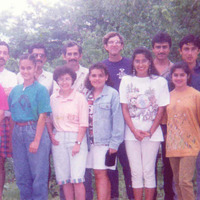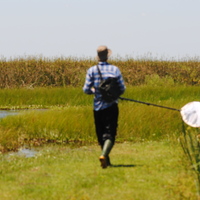
David Peris
Related Authors
Anne Eller
Yale University
Fidel J Tavárez
Queens College of the City University of New York
James M Carpenter
American Museum of Natural History
Rodrigo Feitosa
Universidade Federal do Paraná
Fernando Valerio-Holguín
Colorado State University
Ahmet Ömer Koçak
Yuzuncu Yil University
Juana María Coronado-Blanco
Universidad Autónoma de Tamaulipas
Benigno Gómez
ECOSUR
Arnold H Staniczek
Staatliches Museum für Naturkunde Stuttgart
Federico Lozano
Universidad Nacional de La Plata









Uploads
Papers by David Peris
(15–20 Ma): Cenocephalus tenuis Peris and Solórzano
Kraemer sp. nov. and Tesserocerus simojovelensis Peris and
Solórzano Kraemer sp. nov. Cenocephalus, originally described
as living in Central and South America and then as
fossils from Early to Middle Miocene amber, is noted as morphologically
indistinguishable from Mitosoma, and originally
described as endemic from Madagascar. Thus, we consider
that a close taxonomic relationship exists, even if they are
not the same genus. New evidence of the species already described
in Platypodinae (Tesserocerini) from Mexican and
Dominican ambers (15–20 Ma) and the differences between
those species are discussed, complementing the original descriptions.
The paleobiogeography of Cenocephalus and
Mitosoma is analyzed, which strongly supports the hypothesis
of colonization from Afrotropical Madagascar to America prior
to Early to Middle Miocene (15–20 Ma) via sea currents.
Hymenaea was interpreted as the Mexican and Dominican
resin producers. Based on the analysis of fossil and current
distribution of such plants, our hypothesis considers that the
beetle dispersion occurred with Hymenaea, which was possibly
its host plant.
(15–20 Ma): Cenocephalus tenuis Peris and Solórzano
Kraemer sp. nov. and Tesserocerus simojovelensis Peris and
Solórzano Kraemer sp. nov. Cenocephalus, originally described
as living in Central and South America and then as
fossils from Early to Middle Miocene amber, is noted as morphologically
indistinguishable from Mitosoma, and originally
described as endemic from Madagascar. Thus, we consider
that a close taxonomic relationship exists, even if they are
not the same genus. New evidence of the species already described
in Platypodinae (Tesserocerini) from Mexican and
Dominican ambers (15–20 Ma) and the differences between
those species are discussed, complementing the original descriptions.
The paleobiogeography of Cenocephalus and
Mitosoma is analyzed, which strongly supports the hypothesis
of colonization from Afrotropical Madagascar to America prior
to Early to Middle Miocene (15–20 Ma) via sea currents.
Hymenaea was interpreted as the Mexican and Dominican
resin producers. Based on the analysis of fossil and current
distribution of such plants, our hypothesis considers that the
beetle dispersion occurred with Hymenaea, which was possibly
its host plant.